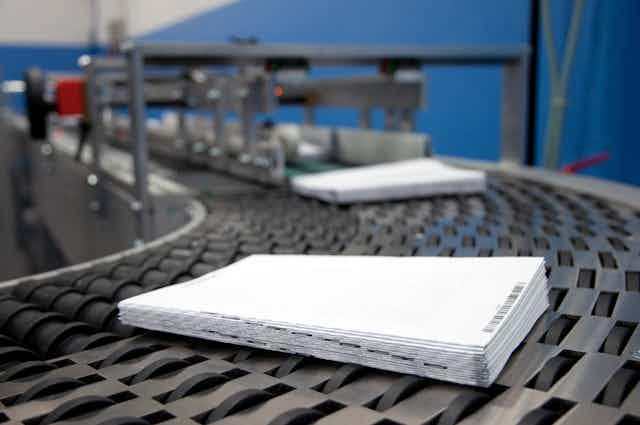If you want to be a better, faster writer, you should treat your writing as a lean manufacturing process. “Lean” is an engineering technique for making manufacturing less wasteful and has been used in industrial production for decades. Today it has spread to sectors from software development to customer services. But I’ve found the principles of lean can even help improve the practice of writing, whether you’re producing a report or a novel.
Lean was developed from Japanese manufacturing ideas in the 1980s and 1990s. It involves applying five principles to minimise waste and increase productivity: flow, value, waste, pull and perfection. The key goals in lean manufacturing are to learn and continually improve. For writing, we have to first start with a finished piece of work in order to get feedback. Then we can start to apply the circular lean process and principles.
Flow
Flow means to create a regular cycle of back-to-back creativity, a rhythm of finished writing projects. If you are producing something difficult, it’s easy to ignore your previous downfalls, your half-baked efforts and the causes of your failures. It’s easy to start again, wipe the slate clean with every project and move on without learning from your mistakes.
Instead, think about how you spend your time in order to create a better flow. Find the bottlenecks in your writing processes and see if you can do anything to speed up each stage of the process. Think carefully about all the different aspects that go into producing your work.
Practice or rehearse the specific aspects of your work that cause delays and aim to make the time taken to complete a project more predictable. Try to complete projects more quickly and efficiently, with a regular cadence that suits your creative style, and make the end-to-end process more seamless and efficient. For example, you might set yourself a target number of words to write each day and keep a log of the number of days you achieve your goal.
Value
Successful manufacturing processes create valuable products, and writing should be no different. Your writing project should provide value, whether that be entertainment, technical accuracy, stimulation or anything else. I know, I’m a writer – I’m so important, right? It’s all about me, me, me. Wrong. Unfortunately, manufacturing and writing are about your consumer and what they gain from the product.
Good writing will communicate important ideas so that people want to absorb and enjoy them. So, you should try to write in a way that communicates your ideas and makes your audience feel excited, informed or entertained (or all three). Or perhaps you need to make your writing more functional. If you can understand what the reader wants to gain, then you can focus your attention on more carefully meeting that need. The idea of value should put the reader, the audience, at the heart of your thinking.
Waste

Finding the value is one thing, but how many projects have you started that ended up sitting on your desk or computer, ignored or forgotten about? That is exactly the kind of waste lean tries to avoid: partially finished work, half-formed ideas and wasted energy.
Work that is never seen never receives feedback from an audience. And you need feedback to learn in order for lean to work. You are rewarded when the finished product rolls off the presses or when you hit the send button. Spending your time developing ideas that don’t get in, or are edited out of your writing, is not useful.
Pull
You should think of writing, much like manufacturing, as pulling a product towards completion. This means the highest priority writing projects are those nearest to being finished. Addressing feedback from editors should take priority over starting any new pieces, as incomplete work is a form of waste). Making final corrections is more important than early stage free-writing. New projects can only start when old ones are completed.
Perfection
My writing never achieves perfection, as you can probably tell. But I always trying to aim for quality improvement. Each piece should be better than the one before. If you aim to self-publish, then aim for a publisher next, then for a better publisher. Or aim for an audience, then a bigger audience.
This is where you learn about the mechanics of writing. Try to improve your grammar, narrative and composition, depending upon the style of your writing. This will create more value for future readers – and hopefully bring your more readers in the process.

